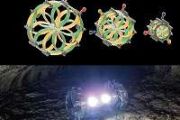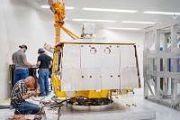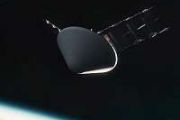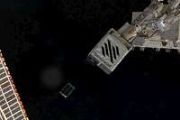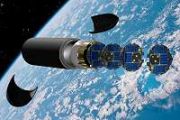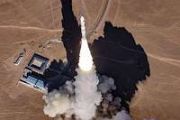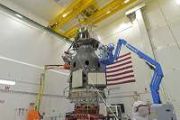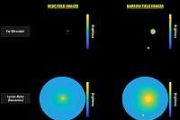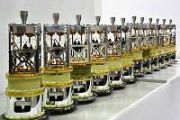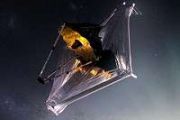
Copernical Team
BlackSky Secures Early Access Agreements for Gen-3 Satellite Services with Global Defense Customers
 BlackSky Technology Inc. (NYSE: BKSY) has signed early access agreements for its Gen-3 satellite services with multiple international defense sector clients, offering real-time, high-resolution satellite imagery for enhanced situational awareness. These customers will gain access to ultra-detailed, 35-centimeter imagery, enabling rapid intelligence assessments and a broader range of mission-crit
BlackSky Technology Inc. (NYSE: BKSY) has signed early access agreements for its Gen-3 satellite services with multiple international defense sector clients, offering real-time, high-resolution satellite imagery for enhanced situational awareness. These customers will gain access to ultra-detailed, 35-centimeter imagery, enabling rapid intelligence assessments and a broader range of mission-crit New Study Reveals Record-Breaking Solar Storm from 12,350 BC
 Scientists have identified the most intense solar particle storm ever detected, dating back to 12,350 BC, significantly revising our understanding of ancient space weather and radiocarbon dating. This groundbreaking discovery was made possible through the SOCOL:14C-Ex model, developed by researchers at the University of Oulu in Finland, designed to analyze extreme solar storms under ancient glac
Scientists have identified the most intense solar particle storm ever detected, dating back to 12,350 BC, significantly revising our understanding of ancient space weather and radiocarbon dating. This groundbreaking discovery was made possible through the SOCOL:14C-Ex model, developed by researchers at the University of Oulu in Finland, designed to analyze extreme solar storms under ancient glac China completes testing of powerful reusable liquid rocket engine
 China has successfully completed full-scale testing of a 140-tonne liquid oxygen-methane rocket engine, a critical component for the nation's reusable carrier rockets, according to its developer, the China Aerospace Science and Technology Corporation's Academy of Aerospace Propulsion Technology. The engine, boasting the highest thrust among China's current open-cycle liquid oxygen-methane models
China has successfully completed full-scale testing of a 140-tonne liquid oxygen-methane rocket engine, a critical component for the nation's reusable carrier rockets, according to its developer, the China Aerospace Science and Technology Corporation's Academy of Aerospace Propulsion Technology. The engine, boasting the highest thrust among China's current open-cycle liquid oxygen-methane models NASA's Voyager 1 Revives Backup Thrusters Before Command Pause
 The mission team wanted to fix the thrusters, deemed unusable decades ago, before the radio antenna that sends commands to the probe went offline for upgrades.
Engineers at NASA's Jet Propulsion Laboratory in Southern California have revived a set of thrusters aboard the Voyager 1 spacecraft that had been considered inoperable since 2004. Fixing the thrusters required creativity and risk,
The mission team wanted to fix the thrusters, deemed unusable decades ago, before the radio antenna that sends commands to the probe went offline for upgrades.
Engineers at NASA's Jet Propulsion Laboratory in Southern California have revived a set of thrusters aboard the Voyager 1 spacecraft that had been considered inoperable since 2004. Fixing the thrusters required creativity and risk, System glitch delays Australian-made rocket launch
 An Australian aerospace firm said Thursday it has delayed a historic first attempt to launch a locally developed rocket into orbit, with a jar of Vegemite as its payload.
Gilmour Space Technologies said a ground system glitch forced it to postpone the first test launch of its three-stage Eris rocket by a day until Friday.
"The issue was with an external power system we use during system
An Australian aerospace firm said Thursday it has delayed a historic first attempt to launch a locally developed rocket into orbit, with a jar of Vegemite as its payload.
Gilmour Space Technologies said a ground system glitch forced it to postpone the first test launch of its three-stage Eris rocket by a day until Friday.
"The issue was with an external power system we use during system Kazakhstan denies reports Russia to leave Baikonur spaceport
 Kazakhstan said Thursday there were no talks on Russia giving up its lease on the Baikonur spaceport before it runs out in 2050, amid reports Moscow is looking to ditch the ageing cosmodrome.
The spaceport is used by Russia to send astronauts to the International Space Station (ISS).
But Moscow has signalled it aims to pull out of the ISS - one of the rare projects where Russian coopera
Kazakhstan said Thursday there were no talks on Russia giving up its lease on the Baikonur spaceport before it runs out in 2050, amid reports Moscow is looking to ditch the ageing cosmodrome.
The spaceport is used by Russia to send astronauts to the International Space Station (ISS).
But Moscow has signalled it aims to pull out of the ISS - one of the rare projects where Russian coopera Orion on the move
 Image:
On 3 May, the fully assembled Orion spacecraft for Artemis II began its journey to the Multi-Payload Processing Facility at NASA’s Kennedy Space Center. The spacecraft is shown in transport, with its protective fairing panels clearly visible and proudly bearing the ESA and NASA logos.
Image:
On 3 May, the fully assembled Orion spacecraft for Artemis II began its journey to the Multi-Payload Processing Facility at NASA’s Kennedy Space Center. The spacecraft is shown in transport, with its protective fairing panels clearly visible and proudly bearing the ESA and NASA logos. Space Laser Communication Terminal Prototypes Enter Phase 2 for Advanced On-Orbit Crosslink Compatibility
 The United States Space Force's (USSF) Space Systems Command (SSC) has awarded contracts to CACI, General Atomics, and Viasat as part of Phase 2 of the $100 million Enterprise Space Terminal (EST) program. This phase aims to advance the development of space laser communication terminal prototypes, promoting long-range, resilient space communications. The contracts were issued through the Space E
The United States Space Force's (USSF) Space Systems Command (SSC) has awarded contracts to CACI, General Atomics, and Viasat as part of Phase 2 of the $100 million Enterprise Space Terminal (EST) program. This phase aims to advance the development of space laser communication terminal prototypes, promoting long-range, resilient space communications. The contracts were issued through the Space E Orbit Fab Strengthens Advisory Board with Space Command Veterans to Enhance National Security Focus
 Orbit Fab, known as the Gas Stations in Space company, has appointed Major General Jody A. Merritt, USAF, and Major General Roger W. Teague, USAF (Ret.), to its Advisory Board. These seasoned military leaders join Dr. Claire Leon, a former Director of the SSC Space Systems Integration Office, reinforcing Orbit Fab's expertise in space operations and government acquisition.
Maj Gen Jody A.
Orbit Fab, known as the Gas Stations in Space company, has appointed Major General Jody A. Merritt, USAF, and Major General Roger W. Teague, USAF (Ret.), to its Advisory Board. These seasoned military leaders join Dr. Claire Leon, a former Director of the SSC Space Systems Integration Office, reinforcing Orbit Fab's expertise in space operations and government acquisition.
Maj Gen Jody A. Transforming Small Satellites with Advanced Wireless Chip for Enhanced Connectivity
 Small satellites, typically weighing between 10 and 100 kilograms, are playing a crucial role in advancing global connectivity through satellite constellations. However, these compact satellites often face limitations in managing communication beams, which are essential for transmitting and receiving signals across vast distances.
Communication beams are electromagnetic waves that can exhi
Small satellites, typically weighing between 10 and 100 kilograms, are playing a crucial role in advancing global connectivity through satellite constellations. However, these compact satellites often face limitations in managing communication beams, which are essential for transmitting and receiving signals across vast distances.
Communication beams are electromagnetic waves that can exhi 










